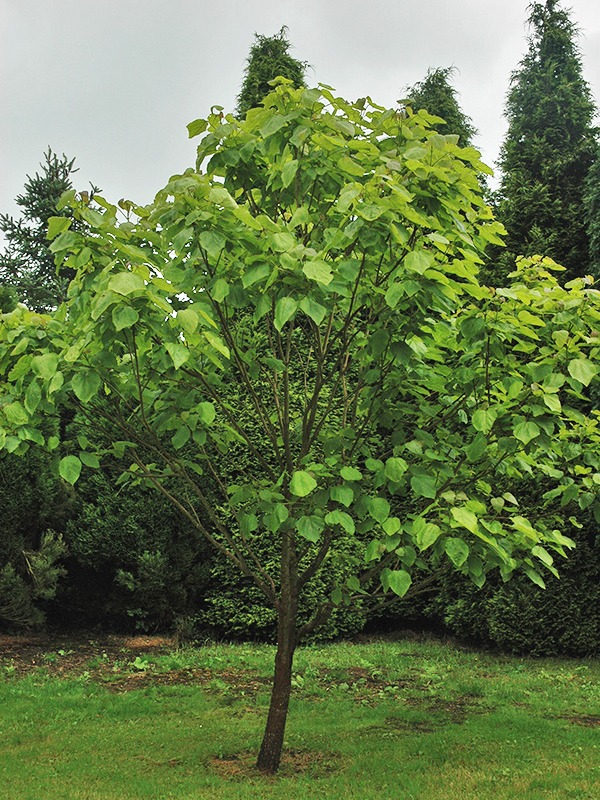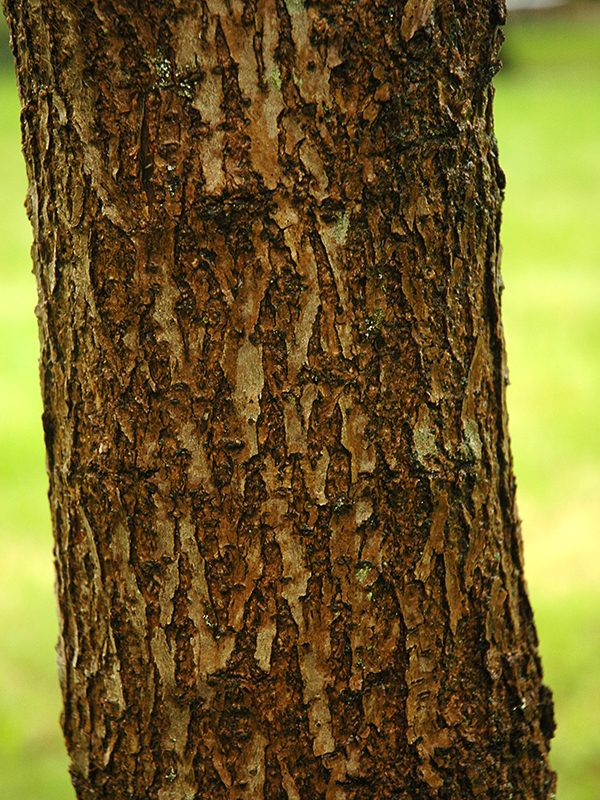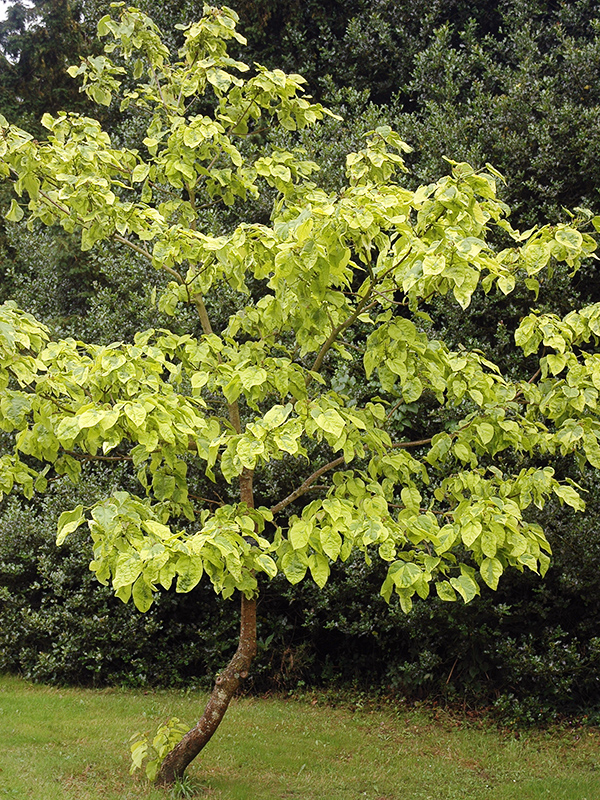| General Description | In ideal situations it is a medium to large tree that has a short trunk and broad spreading branches with a rounded crown. The leaves are cordate, slightly pubescent, they look like a large heart (15-25 cm), are soft textured and are found as opposite pairs or in whorls on the branch. The Common Catalpa has panicles of superb flowers that bloom in early summer. The flowers are followed by long, narrow bean-like pods which are retained late into autumn/winter. The pods are dehiscent and split in the autumn to disperse seeds that can be wind-borne for quite some distance. |
| ID Characteristic | The easily identifiable characteristics of C. bignonioides are its sunken leaf scars, fruit which resemble bean pods and the stem where new buds will emerge on the internode above a leaf scar with pointy bud scales. |
| Shape | A medium sized, broad spreading tree with a rounded crown. |
| Landscape | The Common Catalpa is often described as a multi-functional, fast growing medium to large sized tree. It is commonly found planted outside of its natural habitat as an ornamental or shade tree. It is tolerant of urban pollution but because of its size C. bignonioides is best planted in a medium to large sized situation. Consideration should be given to its placement due to its litter (pods, seedlings, and flowers). Although the perfect placement would be in a park like setting, it can be attractive in any landscape since it may retain its leaves and bean pods late into winter, has showy panicles of white flowers at the beginning of summer and the large heart shaped leaves are always appealing. The Common Catalpa provides good habitat and a natural food source for wildlife, it has been planted to reduce erosion and stabilize soil because of its large, dense root system thus, litter problem aside, it has many positive uses in the landscape. |
| Propagation | The use of seeds is the main method of propagation although layering may also be used where branches touch the ground. Seed are best sown outdoors or in a cold frame when ripe but require stratification for a minimum of three weeks at 1°C . Once the seedlings are ready, they should be carefully transplanted into individual pots to be grown on in a cold frame or poly-house for at least their first winter. Like most woody deciduous plants, you should plant when there will be the least risk of frost or wind damage in spring. |
| Cultivation | It does best in full sun though it will tolerate partial shade. It is susceptible to frost damage (wind), therefore, plants should be planted/transplanted in the late spring or early summer to avoid damage. It requires deep, rich soil to thrive and will show signs of chlorosis when placed in a soil with a pH that is too alkaline. |
| Pests | There are no detrimental pests in Canada, however, in the United States they experience losses due to repeated defoliation by the Catawba Worm (matures into the Catalpa Sphynx Moth). |
| Notable Specimens | Incredible examples of the Common Catalpa may be seen in Thornton Park, which represents the gateway into Pacific Central Station, in Vancouver, British Columbia. Tourists and residents alike gather each year to enjoy C. bignonioides early summer blooms.
|
| Habitat | It can be found growing by stream banks, in wetlands and low woodlands. |
| Bark/Stem Description | The bark texture is smooth with brown to red colouring and when mature, scales or fissures develop. It has been used for medicinal purposes such as a sedatives, treatment for malaria, asthma and cardiovascular conditions. |
| Flower/Leaf Bud Description | Buds are small, red-brown, slightly pubescent, wider than long, and range from 2-5 cm in size. |
| Leaf Description | The leaf blade is entire, cordate, soft textured, light green, and arranged in
either opposite pairs or whorls. It is pinnately veined, 15-25 cm long, pubescent and aromatic when crushed.
|
| Flower Description | Impressive white campanulate (bell-shaped) flowers, in broad panicles (20-25 cm long), with yellow markings and purple spotted throats: the flowers are primarily pollinated by bees. |
| Fruit Description | The fruit, borne in autumn, is long, 20–50 cm, and narrow. The pods resemble a slender bean and contain numerous seeds, each seed has two thin wings that aid in wind dispersal. Pods, with maturity, change from green to brown/black in colour.
|
| Colour Description | The leaves are light green while the flowers are white with lavender spots and orange stripes at the throat. Seedpods are green, turning brown/black when mature.
|
| Texture Description | It is a medium to coarse textured tree (winter).
|




